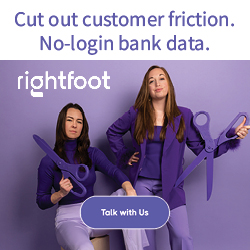
 |
Phone: 844-222-6737 Learn More |
 Since: December 2015 Since: December 2015 |
Potential Match Found in deBanked UCC Filer list
| Company Name | Phone number | UCC Alias 1 | Alias 2 | Alias 3 | Alias 4 | Alias 5 |
| Accord Business Funding | 713-529-2570 |
Stories
Accord Business Funding Makes New Marketing Hire
April 3, 2018 Houston-based Accord Business Funding recently hired Aldo Castro to lead its marketing efforts. His title is Vice President of Sales & Marketing.
Houston-based Accord Business Funding recently hired Aldo Castro to lead its marketing efforts. His title is Vice President of Sales & Marketing.
“We are excited to have Aldo join our team,” Adam Beebe, co-founder of Accord Business Funding, told deBanked. “Aldo comes to us with over twenty years of experience in business-to-business sales and marketing experience… [and he] will use his experience and feedback from the ISO community to help Accord find new ways of adding value to our partners’ businesses.”
Prior to Accord Business Funding, Castro worked as a strategic marketing consultant and co-founded two digital marketing agencies in Texas. Founded in 2013, Accord is a B paper funder with terms between four to eight months and merchants that include auto dealers and trucking and construction businesses, among others. The company of 20 employees is entirely driven by ISOs.
“Accord offers our ISO associates a unique combination of integrity, speed, and flexibility, helping them close their deals faster and easier,” Beebe said.
The Long Running Mysterious Fraud in the Small Business Finance Industry and How to Defend Yourself
May 1, 2024The submitted deals are real. The merchants are real. Everything checks out until suddenly it doesn’t. The merchants block the payments and find out they’ve been scammed.The funders find out they’ve also been scammed. But it’s too late because the money is gone and the fraudsters disappear without a trace.
deBanked reviewed hundreds of court documents, emails, and websites in preparation for this story and spoke with multiple people familiar with the matter, though only one would agree to go on record. Here’s the story of how the scam works and what you need to know to defend yourself.

It was a textbook merchant interview call. The business owner answered the questions succinctly and convincingly. He knew his stuff and sounded confident, like somebody who wanted to just finish the process and get the underwriter to issue a final approval on his funding application. His accent said little about where he was from. It sounded like it could be Mid-Atlantic or perhaps lower New England, just a regular business owner on Main Street USA.
“It sounded a little nasal, right?” said Alex Shvarts, CEO of FundKite, after playing the recording for me to judge.
The tone of the voice did actually sound unusual after thinking about it. Something was off about the call and that was the only tell. For the person on the other end of the phone wasn’t who they claimed to be. It would later be debated if they had used voice changing technology, one of many layers of obfuscation that had been put in place to cover up what is quickly becoming the scheme of the decade.
FundKite had signed up a new broker and promptly received two deals from them. On this particular one the paperwork attached to the application was real. This was a real business and these were their real documents. But the real owner of the business had no idea that any of it had been used to apply for funding with FundKite.
In a typical identity theft scenario, a scammer gets a lender to send the loan proceeds to a bank account that is controlled by the scammer, keeping the victim completely in the dark that their identity is being used for the fraud until much later when a default occurs. But in this case the scammer intended to have a funding company send money to the victim’s actual bank account. It’s a twist that understandably makes it very difficult for the funding company to later believe that the merchant’s identity had been stolen since they were the ones receiving the proceeds. But once the business has been funded, the scammer executes the next step in the scheme, convincing the business owner to send the money to them. If that sounds like a whole lot more work to make this heist successful, then you have no idea how many layers of deceit are in play and the scale at which it’s operating.
 It started sometime around 2019 (maybe even earlier) and is still happening to this day across the industry. The scammer uses stolen identities to incorporate businesses, followed by using those entities to open up bank accounts for them. One account is used to impersonate being a lender and another to impersonate being a broker. They first get to work by being the fake lender and register a domain name that closely resembles and could be mistaken for a real lender they’re trying to impersonate. According to records obtained by deBanked, domain names challenged via UDRP and seized as part of an ongoing investigation into the fraud reveal that the scammers also use stolen identities to register the domains, making the real buyers untraceable.
It started sometime around 2019 (maybe even earlier) and is still happening to this day across the industry. The scammer uses stolen identities to incorporate businesses, followed by using those entities to open up bank accounts for them. One account is used to impersonate being a lender and another to impersonate being a broker. They first get to work by being the fake lender and register a domain name that closely resembles and could be mistaken for a real lender they’re trying to impersonate. According to records obtained by deBanked, domain names challenged via UDRP and seized as part of an ongoing investigation into the fraud reveal that the scammers also use stolen identities to register the domains, making the real buyers untraceable.
The objective of having these fake domains in the first place is to contact existing real borrowers of the real lender and to pass themselves off as the real lender. It’s a classic phishing scheme.
There’s various theories as to how this is done, but there’s a possibility that public records are sufficient for the scammer to accomplish this step. A reverse UCC search can reveal the names of a lender’s customers and the time in which they received a loan. From there, big data or cursory internet searches are enough to obtain the contact info of those borrowers. This type of list building is nothing new and fairly common in the data business.
The scammers then email the borrowers from the fake domain, purporting to work for their real lender, and give them the great news that positive repayment history has afforded them the reward of being able to refinance their loan at a lower rate.
It is generally good practice to check the domain name of a sender, even though that itself is not foolproof, but an incorrect one, especially one that resolves to a “404 Error Not Found” page, should be a sufficient indicator that these emails are coming from an impostor, yet business owners still fall for it, perhaps because they recognize the name and find the offer consistent with their expectations.
 In one case that deBanked reviewed, the opportunity was presented to refinance a double digit APR loan down to as low as 4% with the same lender. When the victim was asked during a deposition if that number had struck him as suspiciously low, he said it did not, especially considering his belief that he had “excellent payment history” and that he felt like it made sense to get a break after all the stresses of covid.
In one case that deBanked reviewed, the opportunity was presented to refinance a double digit APR loan down to as low as 4% with the same lender. When the victim was asked during a deposition if that number had struck him as suspiciously low, he said it did not, especially considering his belief that he had “excellent payment history” and that he felt like it made sense to get a break after all the stresses of covid.
The scammers generally communicate with perfect English over email but will also do phone calls. They use Google voice numbers in the area code that match up with the real lender. deBanked called an older one that had been used and nobody picked up. They might use the name of a real employee at the lender or create a fake one, going so far as to generate a paper trail online that shows the name of that person working for the lender.
Once on the hook, they ask the victim to submit lengthy documentation over email so that the refinance can be reviewed. These are typically documents like tax returns, bank statements, a copy of a driver’s license, A/R and/or A/P schedules, etc. After that the scammer moves on to the next phase, using the phished documents to apply for loans or merchant cash advances. This is where the scammer’s fake broker entity comes in.
These fake brokers tend to pass a background check because they rely on stolen identities that are clean, the business entities they’ve created under them are real and match up, there’s a tax ID, there’s a bank account in their name, and there’s no sketchy stuff about them on the internet. They even have a website, again registered with the fake identity, that often looks like or is an outright exact copy of another broker’s website. Even a diligent funding company can be duped despite a background check. Once the fake broker is signed up with a funder, the phished merchant data is submitted but with the scammer’s phone number and email address. Oftentimes the deal amounts are large. deBanked reviewed several cases related to this scheme that ranged in size from $200,000 to $600,000.
Since all the merchant information is legit, the merchants tend to get approved. The scammers are also adept at pretending to be the merchants in an interview phone call with an underwriter, like the one I listened to previously. They can even guide the merchant through a funder-mandated bank verification under the illusion that it’s all related to their current lender for the refinance. If any questions arise about the mention of another financial company name, it’s explained away as an affiliate partner or related vendor that they use.
 Once the scammer is confident the funds are coming, they tell the merchant the refinance has been approved and that there is a narrow window to complete the final steps. As part of this they send a lengthy legalese-filled digital contract with an e-sign for the fake refinance that looks exactly like their real lender’s, again reinforcing how legitimate the whole thing feels.
Once the scammer is confident the funds are coming, they tell the merchant the refinance has been approved and that there is a narrow window to complete the final steps. As part of this they send a lengthy legalese-filled digital contract with an e-sign for the fake refinance that looks exactly like their real lender’s, again reinforcing how legitimate the whole thing feels.
Once complete, they’re told that a large wire will be arriving in their account, which will actually be from the funding company they don’t know about. In a normal refinance, a lender might withhold a portion of the new loan to apply to the outstanding balance, but in these cases the victims are told that they have to receive the full amount of the funds from their lender first and then wire the outstanding balance of the loan straight back to the lender. The merchant nets the difference if there is any left over. This round-trip transaction is communicated as being their way of managing their accounting, an excuse that again seems to come across as plausible to those that think they’re dealing with their trusted lender the whole time.
In the earlier iterations of the scheme, the name on file for the bank account to wire the funds to would look almost identical to their lender’s name. When the victim sends the wire to pay off their outstanding loan, they are completely unaware that they have just wired funds to a scammer and that the entire thing had been a very elaborate ruse. It’s not until days later when their account starts getting debited by a funding company they have never heard of as part of an agreement they had never entered into do they become alerted that something is amiss. By then it’s too late. Doubly too late if the funder has also wired the fake broker a commission for putting the whole deal together in the first place.
Although the scheme can yield several hundred thousand dollars at a time, it ultimately results in the loss of their fraudulently opened bank accounts as the funders respond with an investigation that can include litigation and/or a report to law enforcement. That means the scammers have to open new accounts under new stolen identities. That’s easier said than done, which is perhaps why last year they apparently improvised on this step. They don’t need to open bank accounts for the fake lenders anymore.
Instead, according to at least three examples reviewed by deBanked, they’re more recently asking the victims to wire the funds to the general deposit account of a cryptocurrency exchange. If this sounds like it would be too obvious, consider that it has worked. The wire forms, which look identical to the earlier versions, are only different in that they contain a different account name to send the funds to. The lender’s logo can still be found on the top.
 In one case, deBanked was able to obtain records that allowed for the funds to be traced. The scammer had the exchange convert the wired funds into Ether, to which the Ether apparently moved between three crypto exchanges before disappearing into a generic holding address of an offshore exchange with millions of transactions. Another dead end.
In one case, deBanked was able to obtain records that allowed for the funds to be traced. The scammer had the exchange convert the wired funds into Ether, to which the Ether apparently moved between three crypto exchanges before disappearing into a generic holding address of an offshore exchange with millions of transactions. Another dead end.
deBanked emailed one of the two exchanges it reviewed related to this scheme to ask about their customer KYC procedures but received no response. The other was not contacted to avoid tipping them off to a possible active investigation. The exchanges both have deposit accounts at US banks, both of which are known for their fintech relationships. Typically, crypto exchanges that take on US customers do rely on some level of KYC. It appears based on limited evidence so far that the crypto accounts opened up by the scammers are done under the stolen identities of the merchants so that everything matches when a wire comes in. This is where it gets murky because the scammers may ask the merchants to take selfies of themselves, ones that could include holding up their ID in their hand or holding a piece of paper with a specific written message on it as proof that it’s them. That a merchant might jump through these hoops on the belief that it’s all to secure a purported refinance with their existing lender requires some suspension of disbelief, though many online finance companies these days are requiring varying levels of customer identity verification.
The outcome, in any case, is that millions of dollars have been purportedly stolen over the course of several years. The scam has been directed at all sorts of funders, from the A paper players to the Z paper players. The merchants, as the original dupes that make this possible because they fall for a basic phishing scheme, are also left to pick up the pieces. The scammers may have even scammed another high profile scammer, at least according to documents reviewed by deBanked. There’s a brazen fearlessness to it all.
A main connecting link has been funders that will do large deals, hundreds of thousands of dollars in a single transaction. But that might be changing. Industry chatter more so than hard evidence suggests the web of intended targets might be growing and that thanks to innovations with AI and crypto, the scammers may attempt to use artificial identities for the brokers rather than real ones. A lot of the steps involving bank accounts and stolen identities are no longer as necessary, which means if you’re a funding or lending company and you’re reading this, you may be vulnerable.
Sources familiar with the matter say that it’s good practice to remind your customers about possible phishing risks and to keep them informed about what methods of communication you will use throughout the life of the relationship. This includes whether or not you might employ phone calls, emails, texts, or snail mail communications, and the precise sender information they should expect. This might limit the likelihood of your own customers from getting phished but there’s tactics you can use to prevent becoming the victim funding company as well.
According to Alex Shvarts, a good start is only conducting a merchant interview on phone numbers assigned to the business. “If it’s a cell phone we have to have a cell phone bill that verifies the owner’s information,” he says. Also, if the customer has a website, avoid communicating with them over a free email address like Outlook or Gmail or Proton Mail and instead direct all communications to an address on their company domain name, one you’ve confirmed is really theirs and not a boilerplate setup by the scammers to deceive you again. Other possible steps are to use live ID verification or a common tool like CLEAR, he suggests. Shvarts wouldn’t disclose some of the proprietary methods they’ve come up with so as not to tip off a scammer reading this.
 When it comes to the broker, do proper due diligence. It’s been said that a fake broker may test the waters with a small deal first before submitting the large fraudulent one to generate a level of confidence that everything is on the up and up.
When it comes to the broker, do proper due diligence. It’s been said that a fake broker may test the waters with a small deal first before submitting the large fraudulent one to generate a level of confidence that everything is on the up and up.
According to documents reviewed by deBanked, the scammers typically rely on a relatively bare bones website for their fake broker shop, a collection of borrowed templates and verbiage from other companies out there. It’s a rabbit hole that can lead one down many wrong directions, especially in an era when similar bare bone lead gen sites litter the internet by the thousands. Consider doing a FaceTime or Zoom call with the broker so that you can see if their face matches the identity that’s been provided!
The scammers have used different domain name registrars and hosting services. They may push for a weekly or monthly payment option so as to create lead time between when the victim wires the funds to them and when the first debit hits from the funder they’ve targeted for it. They seem to prey on merchants that have an outstanding business loan rather than an MCA because it makes the low in-house interest rate refinance all the more plausible. So if you see debits in an applicant’s bank account from any one of the more commonly known online business lenders, you should be thinking about this story and ways to make sure you are speaking with the actual business owner. Do they know who you are? Have they been offered a refinance? Do they even know who their broker is?
“When you first identify the fraud, notify law enforcement including the FBI,” one source familiar with the matter said.
Staying Vigilant in the Funding Business
April 15, 2024There’s a lot of funny business going on these days, so here are some things for you and your merchants to look out for:
The LOC Bait and Switch
A scammer offers the customer an impossibly good deal on a line of credit that is contingent on first entering into some other product. After the customer enters into the first transaction, the LOC offer and the scammer disappear. If your customer is susceptible to falling for something like this, make sure to advise them ahead of time accordingly.
The Mystery Funder
Despite a customer claiming to work exclusively with you as a broker, at some point a third party mysteriously enters the process and offers a separate deal to them to compete with you. Although there could be many reasons for this happening both legitimate or otherwise, including the customer not being completely forthright about exclusivity, you should communicate with your customer beforehand about who or who not to expect a communication from. Also, there are methods you can use to mitigate this by plugging up common attack vectors like an email address or phone # on a submitted application. Allow an attorney to guide you on how to do this most effectively and legally.
The Debt Advisor
Beware the debt advisor who claims they are there to help a merchant reduce the obligations of their loans or advances as many do not understand the contracts they claim to advise on. Because of this, they can potentially push a customer into a much worse situation than they otherwise might’ve been in. A merchant’s best bet is to communicate directly with the source of capital on their own. Oftentimes a contract spells out the proper protocol to follow depending on what the situation is.
 Pac-man
Pac-man
They got hot full packs for sale including bank statements, social security #s, and other data ready to send your way! Before engaging in any such transaction, please consult with an attorney about the potential implications of doing something like this. Same goes for you if you were thinking about “selling your declines.”
The Ghost
Brokers often complain about customers falling for obvious scams over the phone, including the classic LOC scam, however, brokers can be just as susceptible to the same tactics. Before working with any lender or funder, you should conduct a full range of due diligence on them. This includes investigating their precise address, who the owner is, what their background is, what their ISO contract says, what their merchant contract says, etc. Too often brokers are drawn in by a commission they believe they stand to make and a smooth talking biz dev rep they talked to on the phone and skip over all the fundamentals. If the funder turns out to be a scammer, then you’ve potentially placed customers with that scammer and put yourself doubly at risk. A commission isn’t worth waiving due diligence. The stakes are too high for this industry.
BusinessFunding.com Sells for $44,000
February 12, 2024 The world of domain name investors called out a big sale that took place on GoDaddy over the weekend. The domain is businessfunding.com and it reportedly sold for $44,000, according to Namebio which tracks sales when data is available. The whois information does not reveal who the buyer is at this time.
The world of domain name investors called out a big sale that took place on GoDaddy over the weekend. The domain is businessfunding.com and it reportedly sold for $44,000, according to Namebio which tracks sales when data is available. The whois information does not reveal who the buyer is at this time.
Other potentially high value domain names in the small business finance industry include businessloans.com and smallbusinessloans.com, each of which are standalone businesses.
Meanwhile:
loans.com was sold for $3 million 24 years ago and today redirects to the homepage of Bank of America.
businesslenders.com belongs to Business Lenders, LLC, which has since ceased its lending operations.
businesslending.com redirects to a bio page for a big real estate broker.
merchantloan.com redirects to Circadian Funding’s website.
revenuebasedfinancing.com redirects to Lighter Capital’s website.
lenders.com is a page that hasn’t been set up yet.
lending.com doesn’t resolve.
How important is a domain name to a business? Important enough that a business can hardly afford to lose one. And did you hear about the first domain name to ever be used as loan collateral over the blockchain? It just happened recently!
Amazon’s Business Loan Program Relatively Flat, And The Company is Now Possibly the Largest MCA Broker?
October 29, 2023 Amazon’s seller lending program, in which the company extends working capital loans to Amazon sellers to buy inventory, has been somewhat flat this year. Its seller lending receivables in Q3 were unchanged from Q1, coming in at $1.2B. It had briefly gone up in Q2 to $1.3B.
Amazon’s seller lending program, in which the company extends working capital loans to Amazon sellers to buy inventory, has been somewhat flat this year. Its seller lending receivables in Q3 were unchanged from Q1, coming in at $1.2B. It had briefly gone up in Q2 to $1.3B.
Amazon rarely mentions its seller lending business which is but a blip compared to the $143B in net sales the company recorded in just the third quarter. Despite all this cash, Amazon relies on a $1.5B secured revolving credit facility with a lender in the same way many small business lenders do to facilitate this amount of loan volume.
deBanked has been tracking the company’s seller lending receivables balance since 2016.
Amazon’s separate merchant cash advance program is not counted as part of their selling lending program. Amazon partnered up with Parafin in November 2022 to offer MCAs to their clients. One consequence of that is that Amazon sellers talk publicly in the company’s Seller Central forums and this has been no exception. There, most mentions of Parafin have so far been less than flattering.
Much of the confusion reported by sellers is centered around the percentage collected from each sale. Unlike most MCA funding companies, which either withhold a percentage of card sales or debit a fixed daily amount that can later be trued-up upon request, Amazon was previously collecting its percentage “based on whether a seller had received any disbursements, automatic or manual, in the prior week.” However, that changed this past August, according to Amazon who published the following note in their forum:
Payment is deducted from your bank account based on your current Amazon disbursement schedule. If you receive disbursements weekly, payments for your cash advance will be deducted weekly. If you receive disbursements bi-weekly, payments for your cash advance will be deducted bi-weekly. In instances where Amazon sales data is delayed in reaching Parafin, Parafin combines the payment amount with the subsequent payment to avoid debits happening on unexpected days of the week. Sellers whose payments are impacted by these instances receive emails from Parafin detailing the expected payment dates and adjusted amounts.
…
“Your merchant cash advance will be paid off automatically over time as you make successive sales-based payments. Because your offer is determined in part by your past business performance, our estimate is that you’ll pay your merchant cash advance within the estimated timeframe stated when you accepted it. If your sales ramp up or slow down, your payment amounts (and therefore the estimated payment period) may ramp up or slow down with them. The payment rate itself will not change and is a fixed percentage of monthly sales.”
Although there is some irony to Amazon playing the role of MCA broker and MCA customer service, Amazon also refers its loan-interested sellers to Lendistry and Marcus by Goldman Sachs. All of this activity started late last year just as Amazon was on pace to max out its own credit facility with its own lending program. Since then, the company’s flat business loan receivable balance might suggest that Amazon’s seller financing business is actually growing, just not on its own balance sheet since its brokering the deals out.
So who’s the biggest MCA broker in the US? Amazon generated $514B in net sales in 2022. $1B in MCA deals wouldn’t be so hard for a company already doing about a billion a year in loans. It would be quite ironic to discover that the biggest MCA broker in 2023 was Jeff Bezos, but it’s a real possibility.
The State of Funding Right Now
September 19, 2023 “The first quarter was actually kind of slow, like abnormally slow,” said Daniel Dias, founder of Small Business Lending Source, a brokerage based in San Diego. “We came off actually a record-breaking year last year. First quarter this year turned out slow and then it was kind of weird. Maybe it was owners who are hesitant to see what’s going on because there’s a lot of uncertainty in the market.”
“The first quarter was actually kind of slow, like abnormally slow,” said Daniel Dias, founder of Small Business Lending Source, a brokerage based in San Diego. “We came off actually a record-breaking year last year. First quarter this year turned out slow and then it was kind of weird. Maybe it was owners who are hesitant to see what’s going on because there’s a lot of uncertainty in the market.”
Dias says things changed dramatically in Q2, however, to the point of setting yet again a new record. And the momentum only continued into Q3.
“This quarter is actually turning out really well,” he said.
It’s also going really well for Greenbox Capital, a small business funding company based in Miami.
“Q3 has been our best quarter this year,” said Jordan Fein, Greenbox’s CEO. “We positioned the company well over the last 8 months, ready for whatever the economy throws our way. We are running lean and growing again.”
Greenbox began to tighten its credit policies late last year, according to Fein and by continuing this strategy into 2023, it has allowed the company to evolve. “Our momentum has been building ever since we tightened credit and refined our spending in Q4 2022,” Fein said.
Optimism is also in the air at The LCF Group, a small business funding company based on Long Island. “Navigating Q3 and approaching Q4, we anticipate our positive trajectory to continue given the consistent demand from merchants,” said Andy Parker, LCF’s CEO. “Despite certain sectors of the economy facing challenges and the appearance of recession indicators, we’ve adapted our underwriting to reflect these conditions without any major tightening of our guidelines.”
LCF recently announced that it had acquired key strategic assets from Reliant Funding.
Loan Volumes Strong, Approvals Cautious in Small Business Finance Space
August 22, 2023 In this current environment, small business finance companies are proceeding cautiously.
In this current environment, small business finance companies are proceeding cautiously.
“In 2022, the company’s turndown rate stood at 8%, but it has surged to 12% this year,” said David Miles, VP and Director of Credit for Eastern Funding. Eastern Funding primarily serves coin laundromats, grocery stores, and car washes but also operates two subsidiaries that focus on assets like commercial vehicles & tow trucks and fitness & wellness equipment. While Miles said that loan volume has remained strong, the percentage of transactions being turned down has increased.
“…I think that’s fairly indicative of the market or the environment that we’re currently in, which is high interest rates,” said Miles. “You have consumers that are carrying a lot of debt and it’s somewhat of a precursor to a potential downturn or recession.”
The circumstances are being felt all across the lending spectrum. According to a recent consumer lending study from the Federal Reserve, the overall rejection rate for credit applicants was 21.8% in June, the highest level in five years. That study looked primarily at mortgages, credit cards, and auto loans.
But in the commercial universe where Eastern Funding operates, the sentiment seems to be matching the shift in the numbers. On a recent quarterly earnings call, for example, Lightspeed CFO Asha Bakshani said of their MCA program, “There’s tons of demand. We’re just taking our time intentionally given the macro.” On unsecured business loans, Enova CEO David Fisher recently said that “we’re just not convinced the risk/reward is there right now, again, given the uncertainty in the economy, an extra few percentages of origination growth for us this year is pretty inconsequential.” Both Lightspeed and Enova are also still experiencing strong volume despite the conservative approach.
“We’ve definitely seen credit quality go down compared to prior years but that’s the main challenge,” said Miles of Eastern Funding. “And we want to make sure that especially in this environment, that we continue to make good loans, we make loans that don’t go to collections, that don’t go to work-out, and we don’t experience any losses across any of the three divisions.”
One challenge of being cautious, however, is communicating the situation to potential customers who may still be stuck in the mindset of 1-2 years ago.
“Our focus is on making sure that the people that do have credit authority, that they’re well aware of the environment that we’re currently in, and that there is enhanced risk just to do with the macroeconomic environment that we’re operating in,” Miles said.
New California Disclosure Rules Reduce Capital Available to Small Businesses
March 21, 2023In a poll conducted by a leading trade association, since new CA disclosure rules were implemented in December 2022, 40% of respondents were found to be “no longer lending” to prospective borrowers who fall within the regulations’ threshold of less than $500,000. The poll was conducted by The Secured Finance Network (SFNet), an 80-year-old nonprofit with members representing the $4T U.S. secured finance industry. The new law, requiring sweeping financial disclosures, introduced by CA State Senator Steven M. Glazer in 2018, faced four years of strong opposition before being rolled out in December of 2022.
According to the poll, commercial finance companies would rather not lend to small businesses than comply with what they believe are “misguided and un-compliable” requirements. Mark Hafner, president and CEO of Celtic Capital Corporation, based in Calabasas, CA, said, “Unfortunately, we must now shy away from smaller deals (under the $500k threshold) as the disclosure requirements are extremely complicated to figure out and would require getting our attorneys and CPAs involved to ensure compliance. It’s just not worth the costs involved to fund a small deal anymore. The statute is not user friendly and, frankly, not representative of the true costs as there are numerous assumptions that have to be made to calculate the APR based on the state’s requirements. I honestly don’t think it was designed to meet the stated goal of the statute.”
Robert Meyers, president of Republic Business Credit, which does business with many California-based businesses, explained, “While the fines and penalties are clear under the regulations, the state has been unwilling to confirm our compliance or anyone else’s compliance. That fear is what has stopped 40% of our non-banks from doing business in the state, thus reducing access to capital for small- and medium-sized businesses. I expect this number to increase as time goes on. If the goal of this law was to better inform, it is actually doing the opposite as APR just doesn’t apply to our products.”
SFNet reports that its member companies provide “tens of billions” of capital annually in California to small businesses for essential working capital that funds everything from inventory, to work in process to payroll.
“Forty percent of billions is a large number,” said SFNet CEO, Richard D. Gumbrecht. “In attempting to find a one-size-fits-all solution to financial transparency, the State has created a complex set of requirements that misrepresent the actual cost of borrowing. Lenders are saying it’s not worth the cost and risk of complying. If this sample of 50 lenders is indicative of what we can expect, clearly that was not the intent of the legislation. And considering the demise of Silicon Valley Bank, it’s more important than ever that capital is not restricted in California.” The trade association is working with State legislatures to revise the statute. “Other states have found a simpler and more accurate way to protect small borrowers, and given the unintended consequences we are seeing, we are hopeful California will be receptive to these alternative approaches.”
To demonstrate how vital small businesses are to the U.S. economy, and the importance of not curtailing funding, consider these statistics: According to the U.S. Small Business Association (SBA), small businesses of 500 employees or fewer make up 99.9% of all U.S. businesses and 99.7% of firms with paid employees. Of the new jobs created between 1995 and 2020, small businesses accounted for 62%—12.7 million compared to 7.9 million by large enterprises. A 2019 SBA report found that small businesses accounted for 44% of U.S. economic activity.
About Secured Finance Network
Founded in 1944, the Secured Finance Network (formerly Commercial Finance Association) is an international trade association connecting the interests of companies and professionals who deliver and enable secured financing to businesses. With more than 1,000 member organizations throughout the U.S., Europe, Canada and around the world, SFNet brings together the people, data, knowledge, tools and insights that put capital to work. For more information, please visit SFNet.com.
Media Contact:
Michele Ocejo, Director of Communications
Secured Finance Network
mocejo@sfnet.com, 551-999-5283
New Program: 3% SPIFF, Up To 15% Commish, FREE to Merchant, $3,000 Digital Mkt S... accord business funding is excited to announce the new texas pilot program, texas 3+free. sign up today at www.accordbusinessfunding.com. (https://l.f... |

See Post... thanks @showtime73. @quickbizpartner, feel free to reach out and i'll send over our current guidelines., , i consider you a paper .... |
See Post... accord business funding) are still funding.... |
See Post... accord requires a minimum of 6 months in business, $15k monthly deposits, and 500+ credit score. send it over and we'll see what we can do., , you dec... |





























